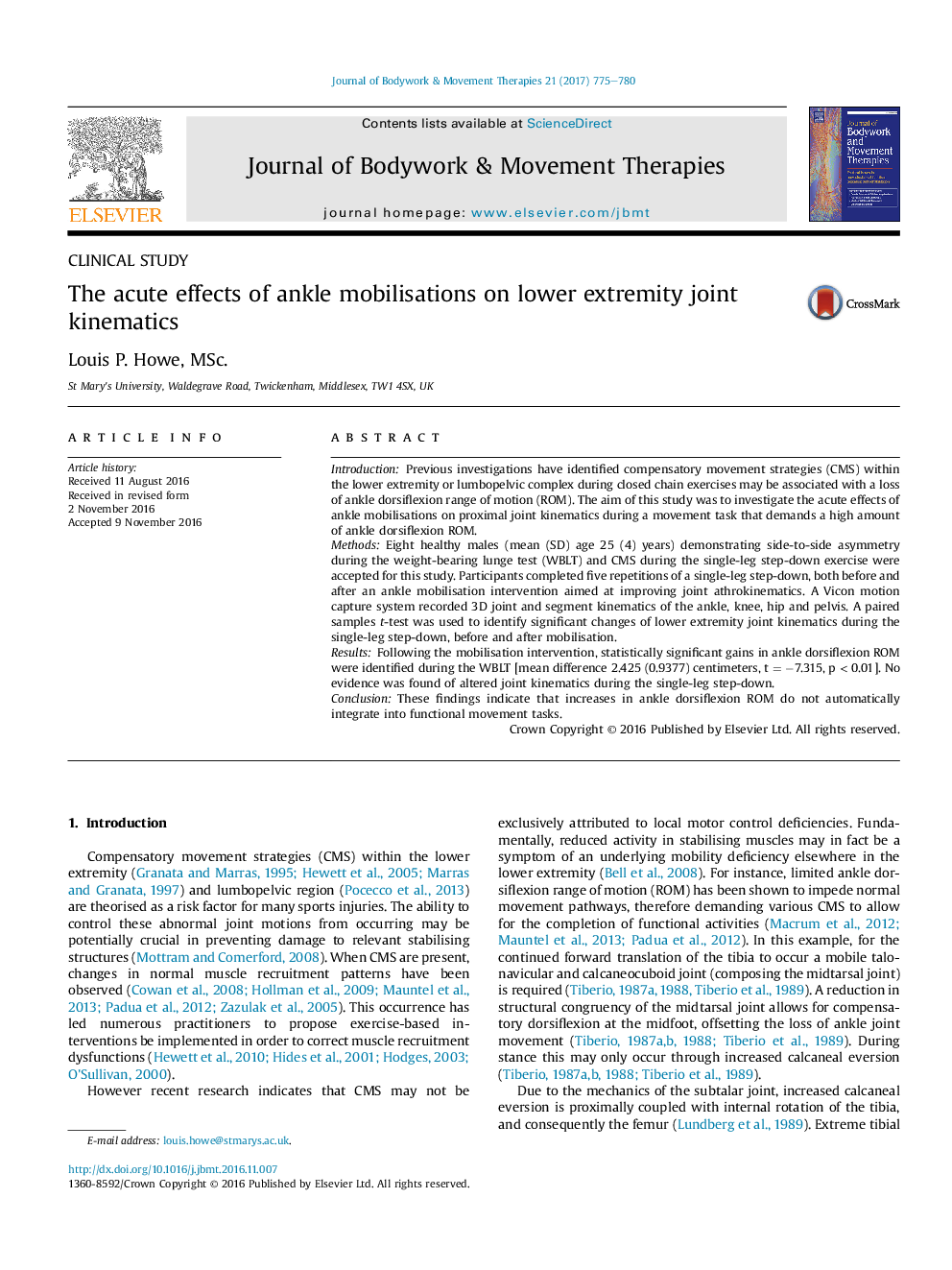| Article ID | Journal | Published Year | Pages | File Type |
|---|---|---|---|---|
| 5563918 | Journal of Bodywork and Movement Therapies | 2017 | 6 Pages |
IntroductionPrevious investigations have identified compensatory movement strategies (CMS) within the lower extremity or lumbopelvic complex during closed chain exercises may be associated with a loss of ankle dorsiflexion range of motion (ROM). The aim of this study was to investigate the acute effects of ankle mobilisations on proximal joint kinematics during a movement task that demands a high amount of ankle dorsiflexion ROM.MethodsEight healthy males (mean (SD) age 25 (4) years) demonstrating side-to-side asymmetry during the weight-bearing lunge test (WBLT) and CMS during the single-leg step-down exercise were accepted for this study. Participants completed five repetitions of a single-leg step-down, both before and after an ankle mobilisation intervention aimed at improving joint athrokinematics. A Vicon motion capture system recorded 3D joint and segment kinematics of the ankle, knee, hip and pelvis. A paired samples t-test was used to identify significant changes of lower extremity joint kinematics during the single-leg step-down, before and after mobilisation.ResultsFollowing the mobilisation intervention, statistically significant gains in ankle dorsiflexion ROM were identified during the WBLT [mean difference 2.425 (0.9377) centimeters, t = â7.315, p < 0.01]. No evidence was found of altered joint kinematics during the single-leg step-down.ConclusionThese findings indicate that increases in ankle dorsiflexion ROM do not automatically integrate into functional movement tasks.
